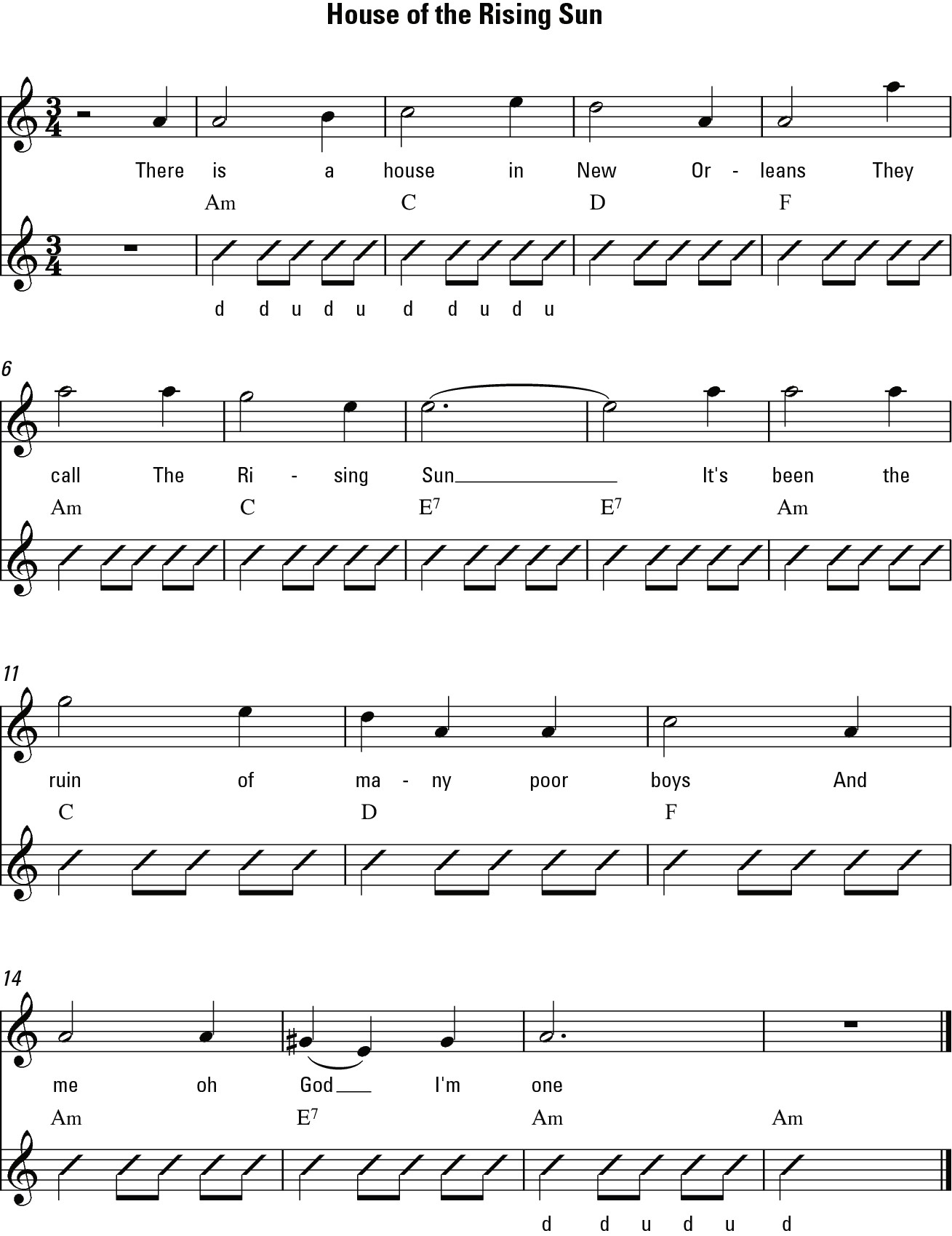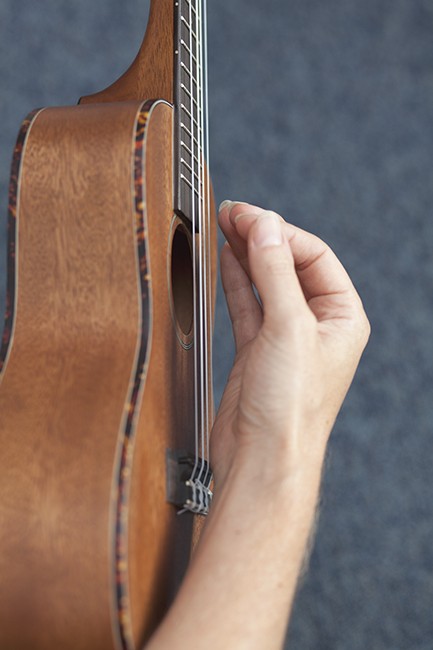Ukulele For Dummies (20 page)
Read Ukulele For Dummies Online
Authors: Alistair Wood

Figure 5-21:
âHouse of the Rising Sun' chord chart.

Checking out chnks
Chnks
are muted strums and are great ways to add variety to the sound of your strumming
.
You play them as down strums, but instead of letting the chord ring, you immediately bring the underside of your strumming hand down on the strings to give it a
chnk
sound.
The chnk technique can be quite tricky to get right because you're required to do two things at once with your strumming hand: strum the strings and stop them ringing.
 The action you want to use for chnks is very similar to that of a normal strum. You want to keep your strumming hand in its usual position (either a loose fist or out flat) and have the strumming movement come from your wrist. Listen to Track 12 to hear a chnk strum.
The action you want to use for chnks is very similar to that of a normal strum. You want to keep your strumming hand in its usual position (either a loose fist or out flat) and have the strumming movement come from your wrist. Listen to Track 12 to hear a chnk strum.
The only difference from a normal strum is that you need to angle your hand at around 45 degrees so that the little-finger edge of your hand is pointing toward the strings (as shown in Figure 5-22).
Figure 5-22:
Photo of the chnking position.

Take a look at Figure 5-23 for an example of how you can use chnking in a strumming pattern. Each chnk is represented by an
x
.
Figure 5-23:
Chnking strum chart.

Strumming for Various Genres
Surprisingly, little difference exists in chords used in different genres. The chords I discuss in Chapter 4 and earlier in this chapter can be used in any number of genres from rock to reggae and blues to barn dances. What really marks out the different styles is how chords are played.
In this section, I discuss the distinctive rhythms of some of the most common genres.
Getting down with blues strumming: The shuffle
This strum is a different beast to the patterns I describe in the earlier section âAdding Pep with Some Strumming Variations'. In the
shuffle strum
you do a standard down-up strum but the first half of the strum lasts longer than the second half â making it sound lop-sided.
Many genres, including country, reggae and Hawaiian, use the shuffle (also known as
swing time
), but blues music takes the greatest advantage of it.
 In a shuffle strum the first part of the beat lasts twice as long as the second half (and so the beat is divided into thirds). But instead of trying to work that out in your head, the best idea is to listen to the examples and grasp the feel.
In a shuffle strum the first part of the beat lasts twice as long as the second half (and so the beat is divided into thirds). But instead of trying to work that out in your head, the best idea is to listen to the examples and grasp the feel.
Shuffle time is indicated at the beginning of a chord chart where you see the notation indicated in Figure 5-24.
Figure 5-24:
Shuffle time notation.

For sounding the shuffle out, I use âMar-tin Mar-tin Mar-tin Mar-tin' (a long âMar' and a short âtin').
 See Figure 5-25 and listen to Track 13 for a sample of the 12-bar blues chart, another key ingredient in the blues sound.
See Figure 5-25 and listen to Track 13 for a sample of the 12-bar blues chart, another key ingredient in the blues sound.
Figure 5-25:
Chord chart for 12-bar blues.

Becoming upbeat about the reggae off-beat
 Jamaican songs are a great place to practise your strong and weak strumming. Reggae songs have a strong emphasis on the
Jamaican songs are a great place to practise your strong and weak strumming. Reggae songs have a strong emphasis on the
off-beats
, which are the second and fourth beats in the bar. Take a look at Figure 5-26 for a visual image and listen to Track 14.
Figure 5-26:
Off-beat strum notation.

 âThe Banana Boat Song' (also known as âDay-O') became particularly popular when Harry Belafonte's version of the tune was used in the film
âThe Banana Boat Song' (also known as âDay-O') became particularly popular when Harry Belafonte's version of the tune was used in the film
Beetlejuice
, and it illustrates the off-beat idea perfectly. The chord progression is very similar to those I use in the earlier sections of this chapter, but the change in the strumming style gives the tune a whole new flavour (take a look at Figure 5-27 and have a listen to Track 15).